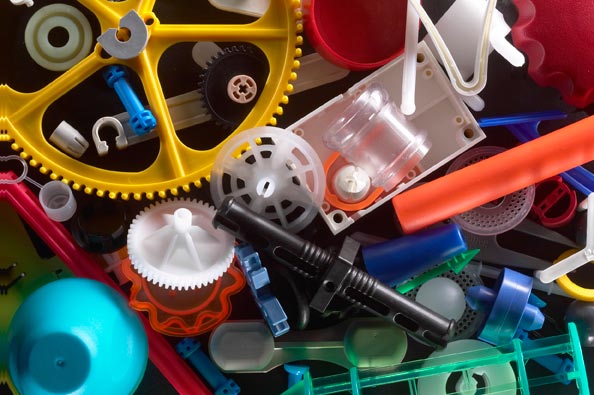Advances in the development of new and improved polymers have led many engineers and product designers to re-think their use of more traditional materials in the manufacturing process. Parts once thought of as impossible to create using plastic, are now being designed with polymers at a higher rate than ever before.
Plastics have historically offered many advantages over other materials, particularly metal. Plastic parts are lighter and afford more design flexibility. They tend to be less expensive than metals and need little if any finishing or additional assembly. And today's innovative polymers are developed with the environment in mind. Using bio-based solutions and easily compostable materials, the goal is to leave as little impact on the planet as possible.
Plastics are taking center stage in many consumer, construction, and industrial applications.They have gained a reputation for strength and endurance and offer the advantages of corrosion resistance and aesthetic appeal. 
Plastic body parts
One industry that is embracing the switch to plastics is the surgical instrument industry. Traditional cast metal instruments are expensive to produce and require sterilization. Surgical instruments made from plastics are produced at a much lower cost. They can be color-coded based on the use of the product, and they are often disposable, negating the need for sterilization. Surgical instruments can also be made from clear, transparent material allowing surgeons greater visibility during procedures. Generally, these instruments are made using the plastic injection molding process.
But, plastic isn't just for small parts. Today's advanced polymers are used in many different applications.
Farming and bio-based polymers
Did you ever think farm machinery could be made from plastics? Well, John Deere is pioneering the use of plastic compounds to replace sheet metal in its agricultural machinery. They have even developed new composites using soy beans and flax. The structural, cost and design advantages of plastics have helped secure John Deere as a leader in their industry.
Move over metal
Custom plastics are replacing many parts, components and materials that were traditionally made from metal. Engineers and product designers understand the benefits of these polymers and design with them in mind. Ultimately, plastics reduce the cost and time needed to bring products to market without sacrificing quality and durability. Just think, one day our cars and lawn tractors could be made entirely from eco-friendly polymers.
Polymers offer concrete solutions
At the University of Ghent in Belgium, researchers have developed a "self-healing" concrete that may be coming to a bridge or overpass near you in the future. The concept of self-healing material has been developed for other applications, but this is a first for concrete. According to a recent article in ZME Science. "The concrete is filled with super-absorbent polymers. So when a crack appears, water comes in, and the super-absorbent polymers swell and they block the crack from further intake of water.” A European project called healCon developed this innovation.
A sustainable future
Our future and our environment depend on the conscious design of products that can be re-used, recycled and repurposed. Today's innovations in plastic materials are focused on decreasing the impact of polymer compounds on the planet. With this goal in mind, the possibilities for new and innovative applications are endless.
Sources: Surgical Instruments: Converting from metal to plastic by Randy Pell, MD&DI magazine; Deere pioneers plastic by Joseph Ogando, Design News.









Comments